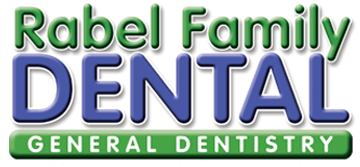What Causes Sores and Bumps in the Mouth?

Do you have a sore or bump on the inside of your mouth? If the bump bothers you, is painful, or you don't know its cause, take a look at potential oral issues and what you can do about them.
Canker Sore
These small-sized ulcers can appear anywhere inside your mouth. The typical sites include the inside of the cheeks and lips, gums, or roof of the mouth.
Canker sores range in size and in the discomfort they cause. Some sores (minor canker sores) are small and cause relatively little discomfort, while the major type of this sore is often deep and seriously painful. The size, depth, and placement of the canker sore can all influence how much pain you're in.
Some dental patients also develop herpetiform canker sores. These occur in clusters up to 10 and typically heal within a week or two. Most minor canker sores heal within a few weeks on their own. Major sores can take up to six weeks to completely heal.
Even though canker sores can cause pain, you still need to maintain proper oral hygiene. If it hurts to brush or floss, talk to the dentist about ways to accommodate your oral issue. You may need to temporarily discontinue irritating alcohol-based mouthwashes or switch to a smaller/softer toothbrush.
Mucocele Cysts
Mucoceles are fluid-filled mucous cysts that form in the mouth or on the lips. These cysts are often painless and form when mucous clogs salivary glands due to injury. Trauma from accidentally biting your cheek or lip or even poor dental hygiene practices can result in these cysts.
Symptoms of mucoceles often include raised swelling (a bump), softness in the area, tenderness, or a bluish/whitish color.
While these cysts are sometimes painless, they still require professional attention. The dentist will evaluate the mucocele and determine what to do next. It's possible for the cyst to heal on its own, without medical intervention. Some mucoceles may require laser therapy, cryotherapy (freezing), or corticosteroid injections.
Squamous Papilloma
The human papilloma virus (HPV) can cause small-sized lesions or bumps in the mouth. These bumps often have a cauliflower-like appearance and grow slowly. Even though HPV can cause cancer, the presence of a bump doesn't necessarily indicate the disease. Always have a dental or other medical professional evaluate potential squamous papilloma lesions.
Accidental Injury
Did you bite your cheek or your tongue? A bite, burn, scratch or other injury from your own teeth, food, or an object can cause a trauma-related bump.
This type of bump varies in size, shape, appearance, and pain level. The more serious the trauma, the more likely you'llthat you'll feel a larger bump or have increased discomfort. While most minor mouth injuries resolve on their own, infection and other oral issues can complicate this problem.
If you have a mouth injury and excessive pain, bleeding that won't stop, fever, increased swelling, or a bad taste/odor in your mouth, contact the dentist as soon as possible. It's possible the injury is infected or you may require additional treatment (beyond at-home care, such as ice packs or over the counter pain medication).
Torus Palatinus
These bony growths occur on the roof of the mouth and come in several different possible shapes. While some dental patients experience rounder bumps, these growths can also feel flat or happen in clusters.
Even though a single cause hasn't been identified , genetics, diet, teeth grinding, or increased bone density may play roles in the development of torus palatinus . In most cases, treatment isn't necessary. But if you aren't sure whether you have this issue or the bump interferes with your ability to speak, eat, or care for your teeth, talk to your dentist about treatment options.
Do you have a bump or sore in your mouth? Contact Rabel Family Dentistry for more information.






